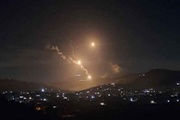The anti-breast-cancer drug has been produced from Artemisia annua plant and analyzed at laboratorial scale, and it has successful effects in reducing the size of breast cancer tumors in animal samples, Iran Nanotechnology Initiative Council reports.
Artemisinin is the active pharmaceutical ingredient (API) of Artemisia annua plant. Artemisinin has more toxicity on cancer cells in the presence of iron and transferrin. In this research, targeted magnetic nanoliposomes containing artemisinin and holo-transferrin were produced and in-vitro studies were carried out on their anticancer effect on breast cancer cells (MCF-7). In-vivo studies were also carried out on mice suffering from breast cancer.
Based on the results, the functionalization of nanoliposomes with magnetic iron nanoparticles facilitates drug delivery to the tumors. In addition, a significant increase is observed in the efficiency of the entrapped drug in the elimination of breast tumor in the sample animals.
According to the researchers, magnetic nanoliposomes containing artemisinin and transferrin were produced in this research through extrusion method, and some of their physical and chemical properties were studied. Next, in-vitro studies were carried out on the toxicity of the produced nanoliposomes through MTT method on MCF-7 cancer cells.
Results showed that the amount of artemisinin and transferrin in the tumor increased 10 and 5.5 times respectively in comparison with the complex created with the free form of the drugs two hours after the injection of magnetic nanoliposomes containing medication in the presence of magnetic field. In addition, the tumor volume in the sample mice significantly reduced in 15 days due to the presence of the magnetic field.
Results of the research have been published in PHARMACOGNOSY MAGAZINE, vol. 11, issue 42, 2015, pp. 117-122.






















Your Comment